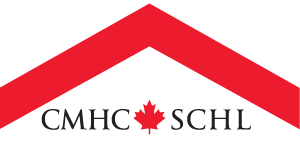Eligible borrowers
Individuals who are Canadian citizens, permanent residents of Canada, or non-permanent residents who are legally authorized to work in Canada.
Loan-to-value (LTV) ratios
Loan-to-value (LTV) ratios measure the ratio of a loan amount to the lending value of the property, expressed as a percentage.
For homeowner loans (owner-occupied properties):
- 1 to 2 units: Up to 95% LTV
- 3 to 4 units: Up to 90% LTV
For small rental loans (non-owner occupied)
- the loan-to-value ratio for 2 to 4 units: up to 80% LTV.
Minimum equity requirements
For homeowner loans, the minimum equity requirement for 1 –and 2 units is 5% of the first $500,000 of lending value and 10% of the remainder of the lending value. For 3 –and 4 units, the minimum equity requirement is 10%.
For small rental loans, the minimum equity requirement is 20%.
Purchase price / lending value, amortization and location
Maximum purchase price / lending value or as-improved property value must be below $1,500,000 for homeowner loans and $1,000,000 for small rental loans.
For homeowner loans, CMHC-insured financing is available for one property per borrower/co-borrower at any given time.
The maximum amortization period is 25 years. (Buyers may qualify for a 30-year amortization through CMHC Home Start.)
The property must be located in Canada and must be suitable and available for full-time, year-round occupancy. The property must also have year-round access (via a vehicular bridge or ferry if it is on an island).
Traditional down payments
Down payments can come from sources such as savings, the sale of a property or a non-repayable financial gift from a relative.
Non-traditional down payments (homeowner loans only)
- The down payment must be arm’s length and not tied to the purchase and sale of the property, either directly or indirectly. Non-traditional sources could include unsecured personal loans or unsecured lines of credit.
- Available for 1- or 2-unit properties with an LTV of 90.01% to 95%, for borrowers with a strong credit management history.
- Non-permanent residents and loans under the chattel loan insurance product aren’t eligible.
Rental income
Whether the property is owner occupied or non-owner occupied, subject to a mortgage loan insurance application or not, we offer different approaches to rental income for qualification purposes.
Find out more about the approach(es) that can be used to calculate rental income and the inputs to consider when calculating the debt service ratios.
Creditworthiness
- At least one borrower (or guarantor) must have a minimum credit score of 600.
- CMHC may consider alternative methods of establishing creditworthiness for borrowers without a credit history.
Debt service
Maximum thresholds:
- Gross Debt Service (GDS) Ratio: 39%
- Total Debt Service (TDS) Ratio: 44%
Interest rates
The GDS and TDS ratios must be calculated using an interest rate which is the greater of the contract interest rate plus 2%, or 5.25%.
Advancing options
- Single advances: Improvement costs less than or equal to 10% of the as-improved value.
- Progress advances: New construction financing or improvement costs greater than 10% of the as-improved value.
- Full Service: CMHC validates up to 4 consecutive advances at no cost.
- Basic Service: Lender validates advances without pre-approval from CMHC.
Non-permanent residents (homeowner loans only)
- Must be legally authorized to work in Canada (e.g., work permit).
- Mortgage loan insurance is available for 1-to-4-unit properties, with at least one housing unit being owner-occupied.
- The purchase must not be subject to any prohibition under the Prohibition on the Purchase of Residential Property by Non-Canadians Act.
- If a Canadian credit report is unavailable, an international credit report, letter of reference from the borrower's financial institution in their country of origin, or alternative methods of establishing creditworthiness may be considered.






 Share via Email
Share via Email
